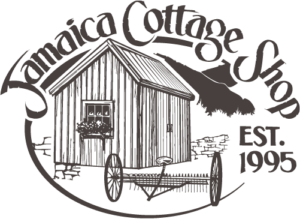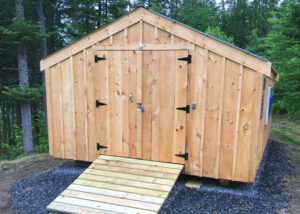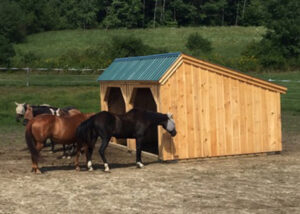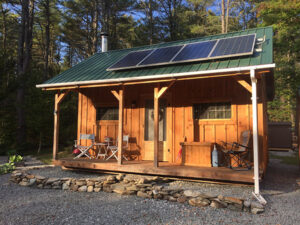
At Jamaica Cottage Shop, we are proud stewards of our local industries and our local environment. That’s why we are members of the Vermont Woodworks Council and the Vermont Woodlands Association. These groups uphold the ideals of supporting the local economy though American-made craftsmanship, responsible resource management, and protection of Vermont’s unique environment. We want to introduce you to their mission, and tell you more about why we are proud to support these awesome organizations.
The Vermont Woodworks Council

As a trade association, the Vermont Woodworks Council represents woodworkers of all kinds in the state of Vermont. This group helps promote the economic interests of the woodworking industry by connecting its members with customers, and facilitating connections between woodworkers and the local lumber mills that supply them. Additionally, the organization also advocates at the Vermont capital for government initiatives to support Vermont’s farm and forest economy.
This organization represents woodworkers that produce a large variety of products ranging from handcrafted bowls and toys, to larger items like furniture, houses and other buildings. Check out their directory to find a whole range of artisans offering Vermont wood products. It’s a great idea to have a look at this list if you’re looking for some custom home furnishings, or unique and handmade gifts for those who appreciate fine craftsmanship.
The History of Woodworking in Vermont
The Vermont Woodworks Council is proud of its heritage. Since Vermont is one of the oldest states in the US, and has always been a heavily wooded region, the history of Vermont woodworking goes all the way back to the 1700s. Settlers used the abundant wood to craft their homes, furniture, and almost anything they needed for daily life. As industry in Vermont began to grow, by the mid 1800s, logging overtook farming as the most important industry.
The boom in availability of raw materials resulted in the growth of the artisan economy. Woodworkers began to make elegant and sophisticated wooden furniture and housewares such as tall clocks, cabinets, and bookcases that were crafted with a variety of richly colored woods. Manufacturers then shipped these fashionable furnishings to clients across the East Coast to cities like New York, Boston, and Philadelphia. Although many of the styles popular in the 1800s have gone away, this strong tradition of made in Vermont furniture still remains to this very day. You can read more about the history of woodworking in Vermont in this informative guide from the Vermont Woodworks Council.
The Future of Vermont Craftsmanship
Today, sustainability has become an important part of the woodworking industry. In the early days of the Vermont logging industry, there was little regard for the preservation of woodlands and forests, and logging was indiscriminate. Irresponsible logging practices led to erosion, flooding, and a loss of wildlife. Vermont was once 90% covered in forest, but by 1900, it was down to just 35% forested. A lack of forests means not only the loss of nature, but the loss of jobs for people in the logging industry, and the woodworkers that depend on Vermont grown lumber.
We’re proud to say that due to an increase in responsible forestry practices, Vermont is now 78% forested once more, which is an incredible accomplishment. Many of these forests are under active management, and and wood is harvested with respect for nature. The annual timber harvest in Vermont is only about half of the annual growth, meaning that forests will continue to thrive and expand under this responsible management. Because of this, Vermont-made wood products can continue to be a vital part of the Vermont economy. The Vermont Woodworkers Association is very proud to support an industry that is local AND sustainable… and we are too!
The Vermont Woodlands Association
We’ve seen how important responsible forest management is for both the preservation of nature and the health of the Vermont economy. The Vermont Woodlands Association is a non-profit organization that advocates for the protection, productive stewardship, and enjoyment of Vermont’s forests. They also work tirelessly to educate landowners and the public on practices that support the health of the forest and the many animals, plants, and insects that call it home.
The Vermont Woodlands Association recognizes the importance of public involvement in the preservation of woodlands. About 80% of woodlands in Vermont are privately owned. The Vermont Woodlands association provides people that own forested land with forestry services and resources to help responsibly manage their woods. They also host a number of webinars and events, including regularly scheduled walks in the woods, where you can accompany a member of the Vermont Woodlands Association on a leisurely and educational stroll through a beautiful forest. If you happen to be a landowner in Vermont that owns some forest, you might really enjoy being a member of this organization, since they also offer networking opportunities, educational workshops and peer-to-peer learning, and many other forrest-y, fun events.
Facts about Vermont’s Woodlands

Promoting the protection of forests, as the Vermont Woodlands Association does, is essential to preserving the natural beauty of Vermont. The woodlands of Vermont support not only the logging and woodworking industries, but the tourism industry as well. Vermont has year-round tourism, with people coming to ski the slopes of the Green Mountains in the winter, viewing the spectacular Autumn foliage in the fall, and hiking the Long Trail in the warmer months. If you’re a tree lover planning a trip to Vermont, you can use this cool map to discover some of the biggest trees in Vermont, and maybe hike to some of them to appreciate their majestic beauty.
Vermont is in a transitional zone between the boreal forests of the north, and the deciduous forests of the south. This means that it has a very unique composition of tree species. Hardwoods in particular make up 71% of the forest cover, and include beech, birch, and the famous maple tree. Without Vermont’s dense forest cover, there would be no sugar shacks producing delicious Vermont maple syrup. Sugar maple trees make up approximately 20% of the trees in Vermont forests, which we think is pretty sweet.
Conclusion
The Vermont Woodworks Council and the Vermont Woodlands Association play vital roles in supporting local business and protecting the natural resources that make Vermont such a great place to live, work, and visit. We are proud to be members of these fantastic organizations. If you feel inspired to support the missions of either of these groups, just head over to their website where you can subscribe to their newsletter, make a donation, or apply to become a member. And no matter where you live, you can participate in the broader missions of these organizations by supporting local artisans in your community, and caring for the nature that you find in your own backyard.






